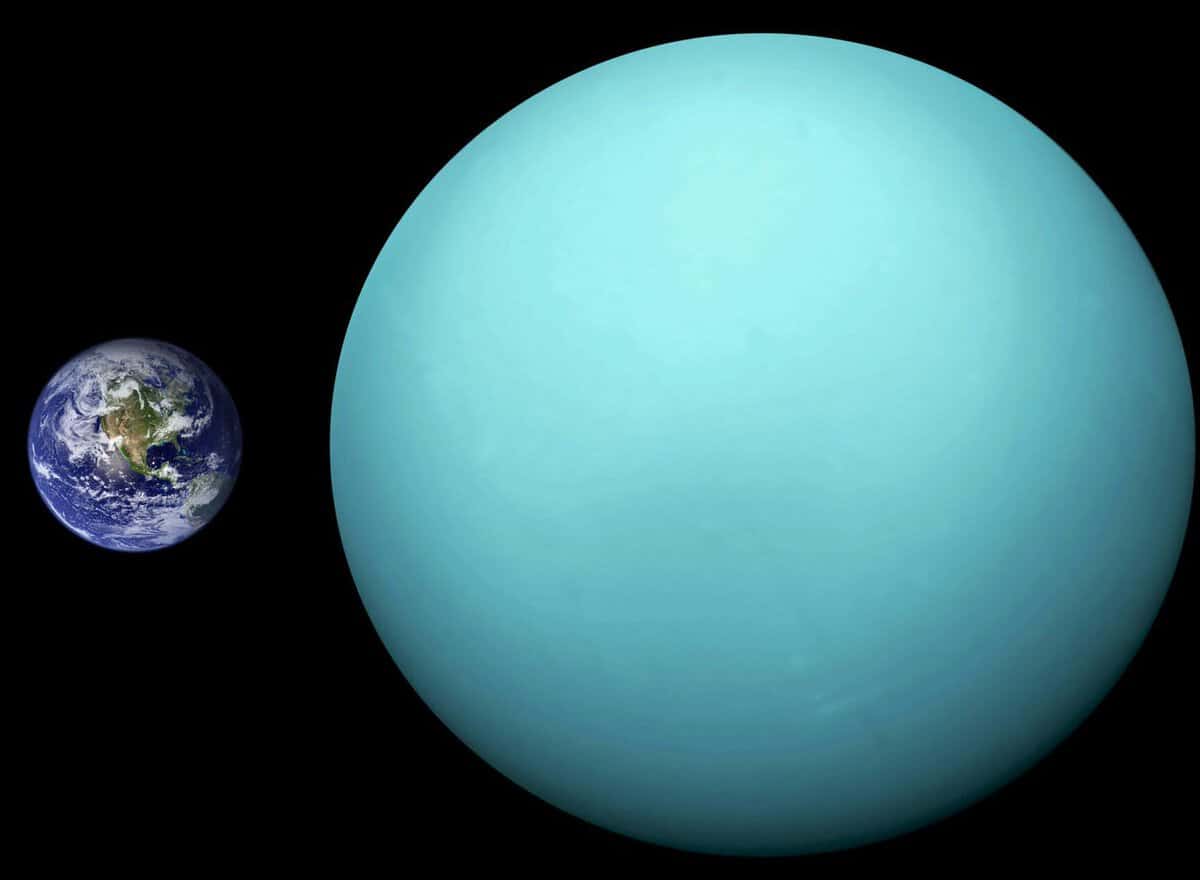Reply from Milena [active].
Mercury appears gray because it lacks an atmosphere and water, consisting primarily of rock. Venus, on the other hand, has a yellowish white hue due to the clouds surrounding the planet, which are formed by the vaporization of hydrochloric acid. Earth, often referred to as the “Blue Planet,” is predominantly blue with a backdrop of white clouds, a result of its vast water cover. Mars, known as the “Red Planet,” is actually red-orange in color, mainly due to the iron-rich desert soil. Jupiter, a massive gaseous planet, displays an orange-yellow hue with distinct colored bands, shaped by clouds of ammonia and ammonium gases. Saturn, on the other hand, exhibits a pale yellow color, also influenced by clouds of ammonia, while its inner layers consist of liquid hydrogen. Uranus, unlike Earth, boasts a light blue shade, which is formed by methane clouds. Neptune, often described as a green planet, has a bluish tint similar to Uranus, as its color is determined by the presence of methane clouds. However, its surface appears darker due to its distance from the Sun. Lastly, Pluto possesses a light brown hue, as its surface is covered in dirty methane ice.
Reply from Obormot Cat [guru].
On Mars, the dawns are blue and the skies turn red during the day (if you were to reside there).
Response from Cgw [guru].
The planets in our solar system often exhibit varying colors.
Mercury appears gray due to its lack of atmosphere, revealing a rocky surface.
Venus appears yellowish white due to its thick layer of colorless and featureless sulfuric acid clouds.
Earth is light blue with white clouds, with the oceans and atmospheric scattering contributing to its color. Different regions may also feature brown, yellow, and green continents or white cloud coverage.
Mars is red-orange, thanks to the presence of iron oxide in its soil.
Jupiter displays orange and white streaks caused by ammonia and ammonium hydrosulfide clouds, respectively. Since the gas giants lack solid surfaces, we can only observe their atmospheric clouds.
Saturn is pale yellow, with an ammonia haze covering the planet and partially obscuring the red clouds beneath.
Uranus is light blue, a result of methane clouds.
Neptune also appears light blue due to methane, but its greater distance from the Sun gives it a darker appearance compared to Uranus.
Pluto, which has not been visited by spacecraft, is light brown, likely due to dirty methane ice on its surface.
Reply from Mr. Michael [expert].
Mercury appears as an ash-colored planet, Venus has a white-poison-green hue, Earth is characterized by its blue color, Mars has a pale orange-rusty tone, Jupiter shows white-brown streaks, Saturn has a light beige shade, Uranus appears gray-blue, and Neptune exhibits a bright blue color.
Response from Vladislav [expert]
Please refrain from making inappropriate comments.
When it comes to astronomy, the color of a planet is dependent on the elements that make up its composition. This is why the planets within our solar system appear different when observed in space.
Earth is a vibrant blue planet with a light-blue hue and a layer of white clouds. The presence of water largely contributes to the coloration of our planet.
Mercury, on the other hand, is a planet with a gray coloration. It lacks both an atmosphere and water, consisting only of rock.
Venus displays a yellowish-white color. This is due to the clouds that encircle the planet, which contain hydrochloric acid.
Mars, known as the red planet, actually has a red-orange hue. It gets its name from the color of its desert-like soil, which contains high levels of iron.
Jupiter is a massive sphere of liquid. It has a primary hue of orange-yellow with streaks of color, as observed in most space images. The planet obtains its color from clouds composed of ammonia and ammonium gases.
Saturn possesses a pale yellow shade, which is also formed by ammonia clouds. Below these clouds lies a layer of liquid hydrogen.
Uranus exhibits a light blue color, although it differs from Earth in that its hue is determined by methane clouds.
Neptune appears green in color, even though its chemical composition is quite similar to Uranus and has a bluish tint. The presence of methane clouds contributes to its color, while its surface is slightly darker due to its significant distance from the Sun.
Pluto is characterized by a light brown hue, which is a result of the substantial amounts of soiled methane ice on its surface.
Nowadays, it is widely accepted that each planet emits its own unique spectrum of radiation, which can be detected using specialized instruments.
It is important to consider the specific colors associated with each planet:
Take a moment to reflect on how you personally resonate with the characteristic color of a particular planet. It has been observed that a strong aversion to a certain color may indicate disharmonious aspects of the corresponding planet in your horoscope. Seeking guidance from an astrologer, as well as engaging in personal exploration of your own horoscope, can help you change your perception of this color and cultivate new, harmonious character traits. This is just one method for personal growth and self-improvement through the use of color.
Every person is born with their own unique astrological influences that are rarely duplicated. However, we are all impacted by the movement of the planets, which can be compared to the strings of a violin being played by a bow. The sound produced can be either harmonious or non-harmonious depending on the aspects of the individual’s horoscope. By studying the color vibrations of the transiting planets, we can gain a better understanding of one another.
Each day of the week is governed by a specific planet, and each planet has its own preferred colors. When a woman wears clothing that aligns with the color of a particular planet, that planet serves as a protective force, providing her with energy and strength.
Monday is governed by the Moon, its hues are white, gleaming, radiant. It bestows tranquility of mind, serenity, inspiration, comprehension of purpose, intuition, sensuality, love for poetry, art, and music, appealing appearance. A favorable color for conception, it enhances reproductive functions. It is also the day of motherhood and maternal energy, so if you are lacking it, serve mothers on this day, assist your mother – and soon the Moon will shower you with its blessings.
Tuesday is ruled by the energy of Mars, its color is red, coral, scarlet. Mars provides courage, bravery, patience, trust, leadership qualities, physical strength, and determination. Therefore, if you need to resolve a conflict, assert yourself, or prove something, Tuesday is the optimal day for battle.
Wednesday is governed by Mercury and is associated with the colors green, grass, and emerald. The energies of Mercury bring about education, intelligence, clear and articulate speech, self-confidence, humor, and wit. It is considered the most auspicious day for gaining knowledge.
Thursday, on the other hand, is ruled by Jupiter and is associated with the colors saffron, orange, and dark yellow. Jupiterian energies are highly spiritual and are responsible for knowledge of truth, spirituality, wealth, fame, success, honor, and harmonious relationships with children. Jupiter also influences wisdom, truthfulness, morality, mercy, benevolence, and compassion. It is particularly significant for women as it determines their marriage and relationship with their husband.
Saturday represents the day dedicated to Saturn, showcasing its characteristics through dark and somewhat somber colors such as dark blue, black, and dark purple. In ancient times, Saturday was a day for commemorating and honoring ancestors, emphasizing the importance of lineage and relationships with one’s lineage. The planet Saturn embodies qualities of collectedness, patience, leadership, authority, longevity, honesty, love for justice, and a deep understanding of right and wrong. It also promotes non-attachment and asceticism. Observing a fast, assisting others, and cherishing the memories of relatives are all recommended on this day.
Sunday, on the other hand, serves as a reverential day dedicated to the Sun, radiating in golden and bright yellow hues. The Sun bestows vitality, resilience, immunity, life force, determination, magnificence, prosperity, wealth, activity, enjoyment, luck, ambition, and fame. This day exudes more masculine energies, making it ideal for expressing respect and honoring one’s father, as it is regarded as his special day.
Give it a try! Experiment! Uncover new facets of yourself!
With affection, Julia Sudakova
Mercury is a grey-colored planet. Its color is determined by the lack of atmosphere and water, with only rocks present.
Earth is a blue, light blue planet with a layer of white clouds. The planet’s color is predominantly influenced by its water cover.
The famous name “Red Planet” refers to Mars, which is actually red-orange. This color is based on the color of the desert soil that contains a high amount of iron.
Jupiter is a massive liquid sphere. Its primary color is orange-yellow, with distinct bands of color. These colors are created by clouds of ammonia and ammonium gases.
Saturn appears pale yellow, and its color is also produced by clouds of ammonia. Beneath these clouds lies liquid hydrogen.
Uranus has a pale blue hue, but unlike Earth, its color is created by clouds of methane.
Neptune, the planet of a greenish hue, although it appears more like a shade of blue, gets its color from methane clouds just like its twin Uranus. The surface of Neptune is darker due to its greater distance from the Sun.
Pluto has a light brown color because of the presence of dirty methane ice on its surface.
Neptune represents unconditional, all-encompassing Love, inspiration, the ability to merge (with the Divine, other people, or any thing bearing the stamp of the Divine), mysticism, and a passionate desire for God. However, it also symbolizes illusions, fog, poison, a tendency toward harmful habits and weakness. The gemstone colors associated with Neptune are a pinkish purple and magenta. On a physical level, it is associated with the Pineal Gland and the feet.
Pluto embodies the principles of metamorphosis, demise, resurrection, the rise of a phoenix from the ashes, rejuvenation, complete transformation, duality, surrender to a Higher Power, and enchantment. The gemstones associated with Pluto are predominantly black or multicolored, often with vibrant red specks. In terms of the human body, Pluto governs regeneration, encompassing cell renewal, the reproductive system, and hereditary ailments.
In astrology, each day of the week is governed by a specific celestial body, and each planet has its own preferred hues. When a woman adorns herself in garments that align with the color associated with a particular planet, that celestial body provides her protection, energy, and fortitude.
Monday is ruled by the Moon, which resonates with colors such as pure white, lustrous silver, and radiant ivory.
It provides a sense of serenity, tranquility, inspiration, comprehension of purpose, intuition, sensuality, adoration of poetry, art, and music, as well as an appealing appearance. Additionally, it is a favorable hue for conception and promotes reproductive functions. Furthermore, it represents motherhood and maternal energy, so if you are lacking it, devote this day to serving mothers and assisting your own mother – and before long, the Moon will bestow its blessings upon you.
Tuesday embodies the energy of Mars, with its colors being red, coral, and scarlet. Mars instills courage, bravery, patience, trust, leadership qualities, physical strength, and determination. Therefore, if you find yourself in need of resolving a conflict, advocating for yourself, or proving something, Tuesday is the optimal day to engage in self-reflection or confront an apparent adversary.
Mercury governs Wednesday and is associated with the colors green, grass, and emerald. The influence of Mercury brings about qualities such as education, intelligence, articulate speech, self-assurance, humor, and wit. Wednesday is considered the most favorable day for acquiring knowledge.
Thursday, on the other hand, is ruled by Jupiter and is represented by the colors saffron, orange, and dark yellow. The energies of Jupiter are highly spiritual and encompass the realms of truth, spirituality, wealth, fame, success, honor, and harmonious relationships with children. Jupiter is also associated with wisdom, honesty, morality, mercy, benevolence, and compassion.
For women, Jupiter holds great significance as it determines their marital prospects and influences their relationship with their husbands.
Saturday is the day dedicated to Saturn, characterized by dark and somber colors such as dark blue, black, and dark purple. Saturn is associated with lineage and connections to our ancestors, making Saturday a day for remembrance and paying tribute to our family roots. The planet Saturn embodies qualities like composure, patience, leadership, authority, longevity, integrity, a sense of justice, moral discernment, detachment, and asceticism. It is recommended to observe fasting on this day, extend a helping hand to others, and cherish the memories of our loved ones.
Sunday is a day of reverence for the Sun, symbolized by its radiant golden and bright yellow colors. The Sun represents vitality, resilience, immunity, life force, determination, grandeur, prosperity, abundance, activity, joy, good fortune, ambition, and fame. With its masculine energies, Sunday is an opportune time to show respect and honor to our fathers, as it is considered their special day.
The language of color is an ancient and influential form of communication among individuals. It is closely tied to a person’s level of development and serves as a defining characteristic of their identity.
The use of color and shades in ceremonial attire, sacrificial rituals, and body painting serves as a means of protection against environmental aggression. Ancient societies developed fundamental psychological concepts about the impact of color on the human psyche.
Primitive cultures associated colors with natural forces. For example, red represented fire, orange and gold symbolized the Sun, green signified the arrival of spring and new life, and blue represented the sky and vast oceans.
Some ancient civilizations made a connection between color and the influence of the planets. The oldest system that matched metals and stones was based on this correspondence. Due to their similar colors, gold was associated with the Sun and silver with the Moon. Other colors were also assigned to different planets in ancient times. Mars was represented by red, Venus by green, Jupiter by purple or dark blue, Saturn by black or brown, and Mercury by various colors. Surprisingly, modern scientific research has later confirmed this information.
From an astronomical perspective, the color of a planet is influenced by the composition of its substances. This is why the planets in our solar system appear different in space.
The planet Earth is a beautiful shade of blue, with a light blue hue and a layer of fluffy white clouds. The stunning color of our planet is mostly due to the vast amount of water that covers its surface.
Mercury, on the other hand, is a rather dull gray-colored planet. It lacks both atmosphere and water, consisting mainly of solid rock.
Venus, with its yellowish-white appearance, is quite unique. The color is actually derived from the clouds that surround the planet, which contain hydrochloric acid.
Mars, known as the “red planet,” showcases a captivating red-orange hue. This color is attributed to the abundance of iron in the desert-like soil.
Jupiter, a massive gas giant, displays a primary color of orange-yellow. It also exhibits various streaks of color, as seen in many space images. The vibrant hues are a result of ammonia and ammonium gases within the planet’s clouds.
Saturn, with its pale yellow complexion, owes its color to the presence of ammonia clouds. Beneath these clouds, there lies a layer of liquid hydrogen.
Uranus is characterized by a light blue hue, however, unlike Earth, its color is a result of the presence of methane clouds.
Neptune, on the other hand, exhibits a green coloration. While it shares a similar chemical composition with Uranus and has a bluish tint, the presence of methane clouds gives Neptune its distinct green hue. Additionally, its surface appears slightly darker due to its considerable distance from the Sun.
Pluto displays a light brown color due to the abundance of dirty methane ice covering its surface.
It is widely accepted that each planet emits its own unique spectral radiation, which can be detected using specialized instruments.
When considering the colors of the planets, it is important to take into account their influence on personality and the study of birth horoscopes.
For a proper adjustment to the movements of the planets
During the time of each individual’s birth, unique astrological influences are formed, which are rarely replicated. Simultaneously, we are all impacted by the planets in transit. They interact with the threads of our personal horoscope like the bow of a violin. Depending on the aspects of the horoscope, harmonious or disharmonious music is produced. Examining the color vibrations of the transiting planets aids in enhancing our understanding of one another.
Additionally, it is essential to pay attention to the color of the Sun in your zodiac sign on the eve of your birthday. This serves as another color clue for understanding your character.
You have the ability to amplify the manifestation of a specific planet or increase the likelihood of desired events by incorporating the appropriate color accents into your surroundings, interior design, and clothing. This is especially important if you find yourself disliking your current color scheme, as negative effects may arise. In such cases, it is advisable to align your emotions with your planetary color as quickly as possible, or consult an astrologer for guidance.
The Planets of the Solar System
According to the official stance of the International Astronomical Union (IAU), the organization responsible for assigning names to celestial bodies, there are only 8 recognized planets.
In 2006, Pluto was removed from the classification of planets due to the presence of objects in the Kuiper belt that are larger or equal in size to Pluto. Therefore, if we consider Pluto as a proper celestial body, we must also include Eridu, which is nearly the same size as Pluto, in this category.
According to the definition by the Minor Planet Center (MPC), there are currently 8 recognized planets: Mercury, Venus, Earth, Mars, Jupiter, Saturn, Uranus, and Neptune.
All planets can be categorized into two groups based on their physical characteristics: terrestrial planets and gas giants.
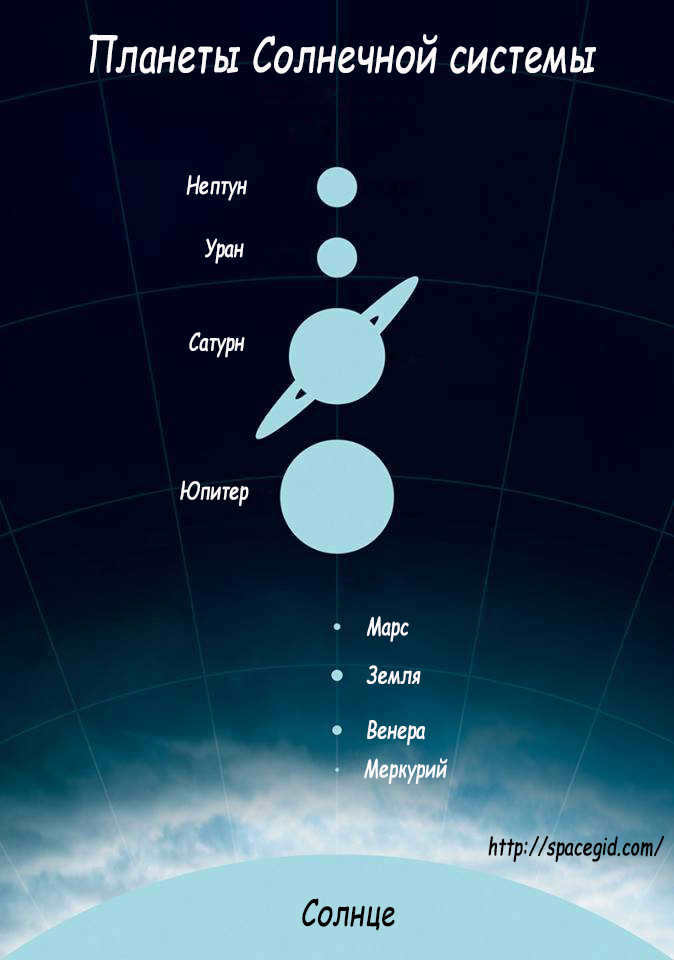
An illustration showing how the planets are positioned can be seen in the picture above.
Rocky planets
Planet Mercury
With a radius of just 2440 km, Mercury is the smallest planet in the Solar System. Its revolution around the Sun takes approximately 88 days, which is equivalent to one Earth year. However, Mercury’s rotation on its own axis is much slower, taking only one and a half times longer than its revolution around the Sun. This means that a day on Mercury lasts around 59 Earth days.
For a long time, it was believed that Mercury always kept the same side facing the Sun, as its visibility from Earth repeated every four Mercurian days. However, radar research and continuous observations from space stations have debunked this misconception.
Mercury has one of the most unstable orbits, with its speed, distance from the Sun, and position constantly changing. This fascinating phenomenon can be observed by anyone who is interested.
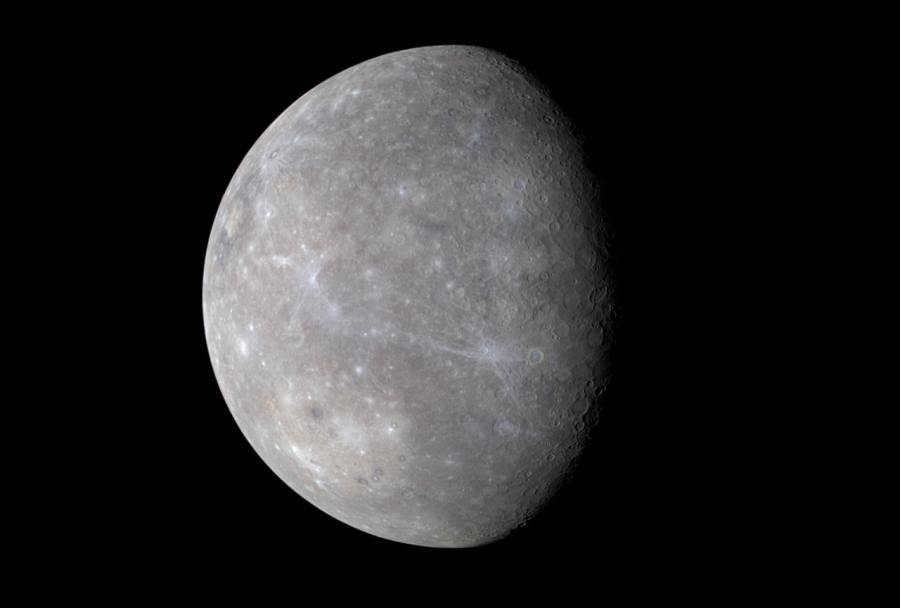
Mercury, which is depicted in color, is an image of the MESSENGER spacecraft.
Due to its close proximity to the Sun, Mercury undergoes the most extreme temperature changes among all the planets in our solar system. The average temperature during the day reaches approximately 350 degrees Celsius, while at night it drops to a chilling -170 °C. Scientists have detected the presence of sodium, oxygen, helium, potassium, hydrogen, and argon in its atmosphere. There is a hypothesis suggesting that Mercury was once a moon of Venus, but this idea has yet to be proven. Notably, Mercury does not have any satellites of its own.
Venus
Venus is the second planet from the Sun, and its atmosphere is predominantly composed of carbon dioxide. It is commonly referred to as both the Morning Star and the Evening Star, as it is the first celestial body visible after sunset and remains visible before dawn, even when other stars are not. The atmosphere of Venus contains approximately 96% carbon dioxide, with nitrogen making up a small percentage of around 4%. Additionally, there are trace amounts of water vapor and oxygen present.
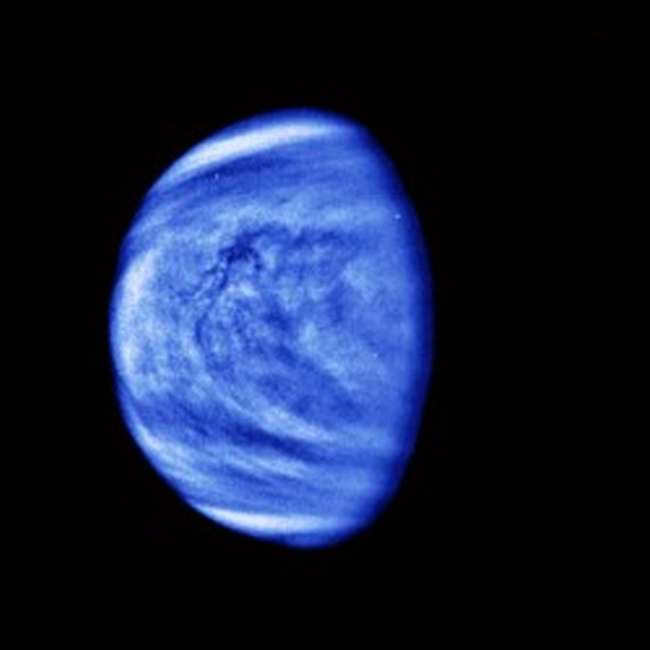
The presence of this atmosphere leads to the creation of a greenhouse effect, resulting in surface temperatures that are even higher than those on Mercury, reaching up to 475 °C. Venus is often referred to as Earth’s sister due to its similar mass and radius. In fact, its radius is approximately 0.85% that of Earth’s, measuring at 6052 km. Additionally, the leisurely pace of a Venusian day, which lasts 243 Earth days, is almost equal to a year on Venus, which is 225 Earth days. It is worth noting that, much like Mercury, Venus does not have any satellites.
The planet closest to the Sun and the solitary one in our solar system that possesses liquid water on its surface, an essential condition for the emergence of life as we know it. The Earth, with a radius measuring 6371 kilometers, distinguishes itself from other celestial bodies in our system by having over 70% of its surface covered by water, with the remaining area occupied by continents. Another notable characteristic of our planet is the presence of tectonic plates concealed beneath its mantle, which can undergo slow movement, ultimately resulting in changes to the landscape. The Earth’s velocity as it orbits the Sun ranges from 29 to 30 kilometers per second.
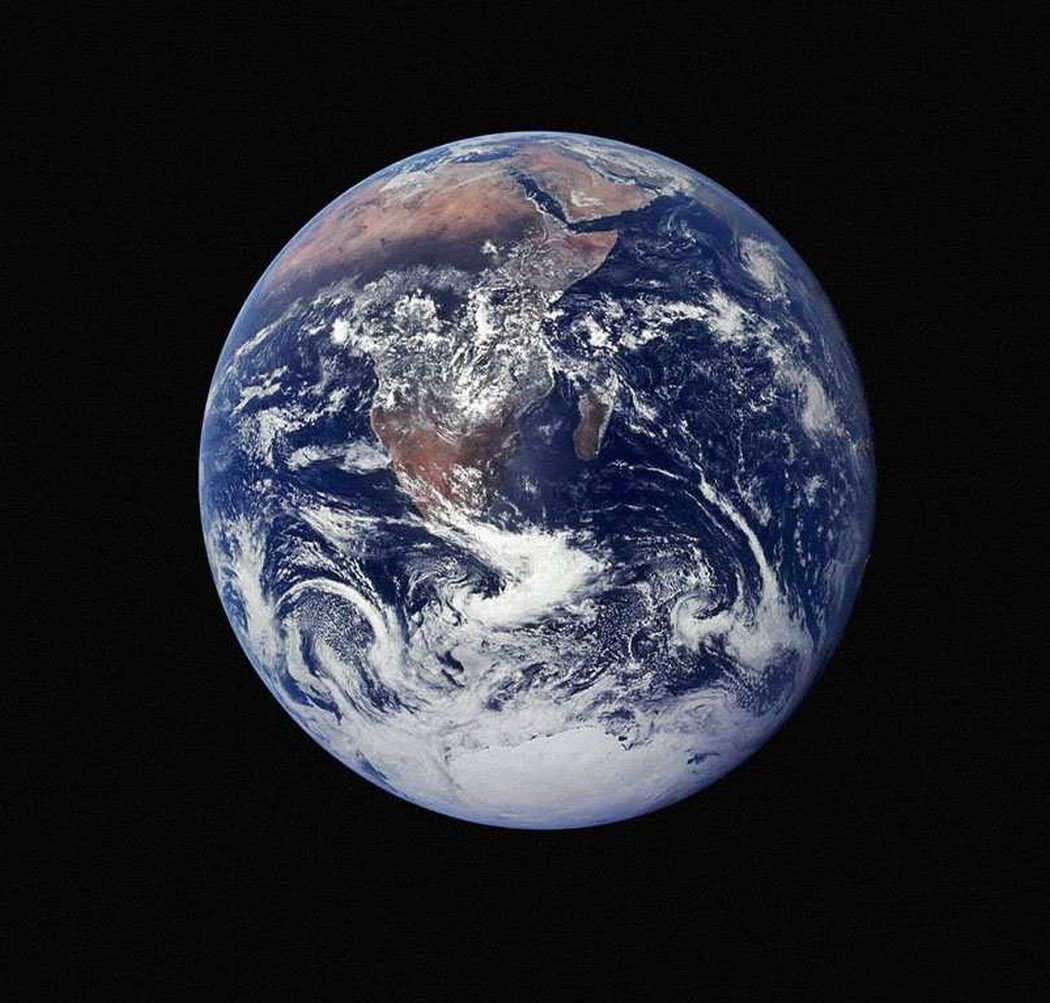
It takes nearly 24 hours for the Earth to complete one rotation on its axis, while its orbital period lasts 365 days, which is significantly longer compared to its closest neighboring planets. The duration of a day and a year on Earth is also considered as a standard, but this is primarily for the ease of measuring time intervals on other planets. Additionally, Earth is accompanied by one natural satellite known as the Moon.
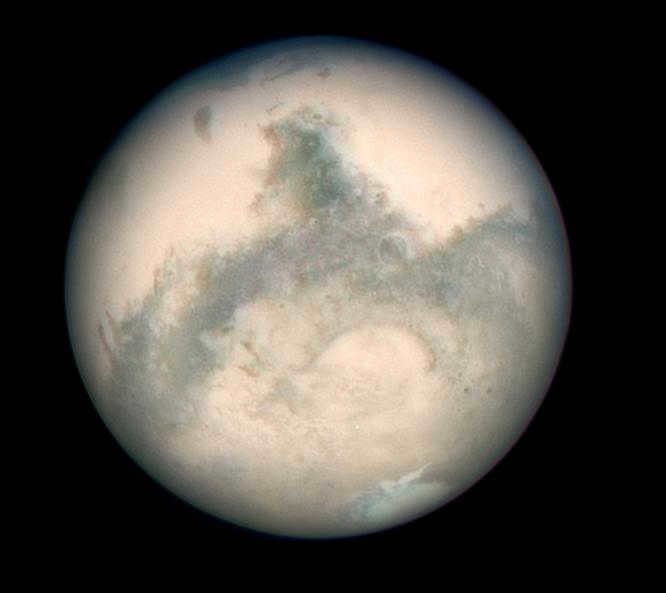
Mars, the fourth planet from the Sun, is well-known for its thin atmosphere. Scientists from various countries, including the USSR and the United States, have been actively exploring the planet since 1960. While not all exploration missions have been successful, the discovery of water in certain areas suggests the possibility of primitive life on Mars, either in the past or present.
One unique feature of Mars is its brightness, which allows it to be visible from Earth even without the use of instruments. During the opposition, which occurs every 15-17 years, Mars becomes the brightest object in the sky, surpassing even Jupiter and Venus.
With a radius of approximately half that of Earth, measuring 3390 km, Mars has a significantly longer year, lasting 687 days. Additionally, it has two satellites, Phobos and Deimos.
A visual representation of the solar system
Caution! The animation will only work on browsers that support the -webkit standard (such as Google Chrome, Opera, or Safari).
The hue of Mercury – the initial planet in our solar system. Discover the actual surface shade, the impact of the atmospheric layer, and the composition, as well as how it compares to other planets.
When compared to other planets in our solar system, Mercury appears as a mere rocky surface. It possesses a thin layer of atmosphere, but all exploratory vehicles encounter the gray rock beneath. Mercury’s color is a result of its molten planetary surface that cooled and solidified billions of years in the past.
Mercury’s surface color
To comprehend the coloration of Mercury’s surface, it is crucial to bear in mind that it is not subject to tectonic activity or erosion. Its composition has only been altered since solidification as a result of meteor impacts. In the past, certain deep basins have been filled with molten magma. Scientists are confident that there are no active volcanoes on the planet, although an inadvertent release of lava or gas is conceivable.
Presented above is the most exceptional photograph that captures the authentic hue of the planet Mercury. This is precisely what one would observe from a passenger spacecraft. A vast expanse of dark gray with crater formations. The coloration is typically entirely gray, but faint speckles can be discerned in certain areas. One of the troughs resembles the shape of a spider.
The planet Mercury has a color that strongly resembles the Moon, Earth’s satellite. However, upon closer inspection, one can quickly distinguish the Moon with its seas, which were formed by past lava flows. To provide a more accurate description of Mercury’s color, it can be likened to liquid silver at room temperature.
Jupiter, the fifth planet from the Sun, is a gas giant with a diameter of 145,000 km, making it the largest planet in the solar system. In fact, Jupiter’s diameter is 11 times that of Earth, and in terms of mass, Earth is only 318 times smaller than Jupiter. This colossal planet boasts 60 satellites in its orbit, but only four of them have been extensively explored: Ganymede, Europa, Io, and Callisto. If you’re seeking the most extraordinary weather, look no further than Jupiter.
Jupiter
Jupiter is composed of gases that make it very light. It is made up of 86% hydrogen and 14% helium, which are the lightest gases in the universe. A day on Jupiter is relatively short, lasting only 9.9 hours. In terms of its revolution around the Sun, Jupiter takes about 11.86 years to complete one orbit, known as a sidereal year. What sets Jupiter apart from other planets is its unique color. Additionally, Jupiter is the largest planet in the solar system.
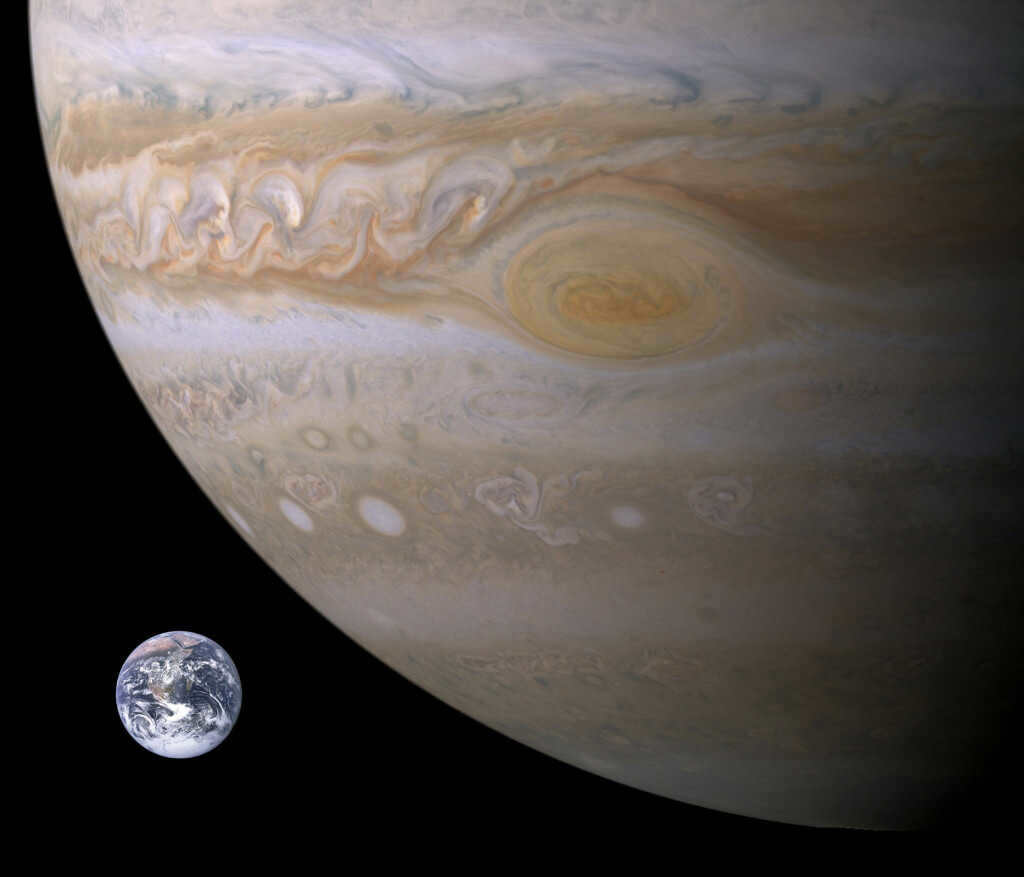
Scientists are eager to ascertain the phenomena occurring on this immense gas planet, specifically in regards to the presence of water and a solid surface. To accomplish this, the deployment of a research facility is necessary. Given that Jupiter is composed primarily of hydrogen, a specialized balloon is required for this endeavor. The use of a helium balloon is imperative due to hydrogen’s lightweight nature, which would otherwise cause the balloon to descend. Within the frigid hydrogen-rich atmosphere, the utilization of hot hydrogen is crucial to prevent the balloon from descending towards Jupiter’s core. However, as we all know, the task of heating hydrogen is no simple feat. Thus, the origin of this colossal balloon remains an enigma.
Jupiter’s Color
Jupiter boasts the most extraordinary hue among all the planets in our solar system. Its atmosphere is primarily composed of hydrogen gas, with traces of ammonia and other gases. The awe-inspiring giant displays a remarkable striped pattern, rendering its color difficult to categorize. The white stripes are a result of ammonia cloud formations, while the orange stripes are formed by ammonium hydrosulfide. It is highly probable that this colossal planet lacks a solid surface, making its entire composition consist of these mesmerizing clouds.
Jupiter: The Defender of Earth
Earth owes its very existence to the mighty planet Jupiter. This colossal gas giant acts as a shield, safeguarding our home from the destructive force of meteorites and asteroids hurtling towards it. With its immense gravitational pull, Jupiter captures these hostile celestial objects, either flinging them back into space or absorbing them into its own vast body. By doing so, this gigantic planet effectively keeps meteorites and asteroids at bay, protecting the inner solar system and preventing other planets from being struck by extraterrestrial intruders.
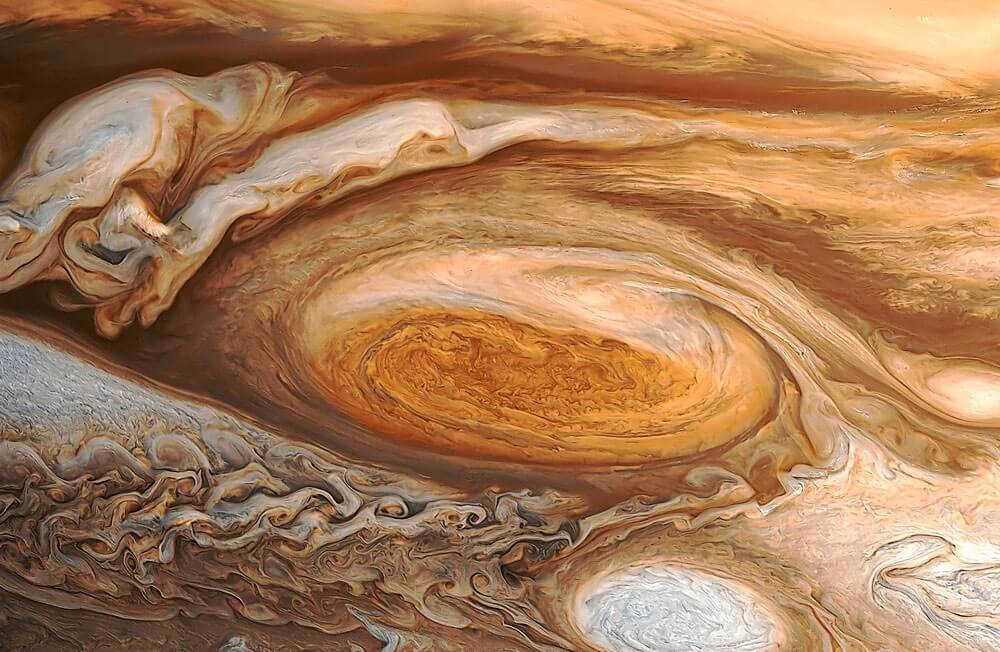
The Red Spot, also known as the Eye of Jupiter, is an enormous storm that is unparalleled by any other storm in our solar system. This incredible storm has been raging for over 300 years, making it a truly remarkable phenomenon. The size of the Red Spot is so immense that it can be compared to the size of our very own planet Earth. It is truly mind-boggling to think about the sheer power and intensity of this storm. Within the depths of the Red Spot, winds are estimated to reach speeds of up to 700 kilometers per hour. To put this into perspective, the strongest wind ever recorded on Earth had a speed of 280 km/hour. It is truly fascinating to contemplate what may be occurring within this vast ocean of swirling winds and atmospheric chaos.
Response from Andrei Egorov [newcomer]
different
Reply from the expert on the topic of staple food:
Mars experiences blue sunrises and crimson skies during daylight hours (in the case of human habitation).
Response from Eurovision [guru]
The colors of the planets in our solar system can vary greatly. Here is a breakdown of the true colors of each planet:
Mercury: This planet is primarily gray. Its lack of atmosphere means that we can only observe its rocky surface.
Venus: Venus appears yellowish-white due to the thick layer of colorless and featureless clouds made up of sulfuric acid.
Earth: Our home planet is known for its light blue color, which is caused by the reflection of light off the oceans and the scattering of light by the atmosphere. Depending on the region, there may be brown, yellow, and green continents, as well as white clouds.
Mars: Mars is red-orange in color, thanks to the presence of iron oxide, which gives the soil its distinctive red hue.
Jupiter: This gas giant displays orange and white streaks in its atmosphere. The white streaks are composed of ammonia clouds, while the orange streaks are formed by ammonium hydrosulfide clouds.
Saturn: Saturn is pale yellow in color, with a white haze of ammonia covering the entire planet and partially obscuring the red clouds below.
Uranus: Uranus appears light blue due to the presence of methane clouds.
Neptune: Like Uranus, Neptune also has a light blue color, which is also attributed to the presence of methane. However, Neptune’s surface appears darker than Uranus due to its greater distance from the Sun.
Pluto: Although Pluto has never been visited by spacecraft, it is believed to have a light brown color. This is likely due to the presence of dirty methane ice on its surface.
Response from Mr. Michael [guru].
Mercury appears ashen in color, Venus has a white poison-green hue, Earth is characterized by its blue color, Mars has a pale orange-rusty tone, Jupiter is streaked with white and brown, Saturn has a light beige appearance, Uranus is gray-blue, and Neptune shines with a bright blue color.
Reply from Vladislav [guru]
please refrain from using hallucinogenic substances
Response from Ѐustam Iskenderov [guru].
Mars has been known as the “red” planet, although it actually appears reddish. I cannot recall with certainty, but I believe either Saturn or Jupiter has a bluish tint.
All colors have an impact on individuals in various ways. Each color is associated with a specific planet and bestows upon individuals special qualities, talents, and skills. To determine which colors are auspicious for you, you can utilize the descriptions of colors and planets without the need to consult an astrologer.
THE SHADE OF MERCURY – LIGHT GREEN
Mercury, the most intellectually inclined planet in Vedic astrology, is associated with the hue of green. This particular color instills a sense of novelty, a yearning to embark on new ventures, a surge of energy, and a thirst for knowledge within an individual. It is the color of choice for businessmen, students, and those in the field of science.
The green shade endows an individual with:
*Fresh and innovative ideas;
*An inclination to acquire knowledge, enroll in courses, and enhance one’s qualifications;
*The development of effective communication skills;
*Assistance in forging valuable business connections;
*The acceleration of the thought process;
*Talent in establishing and successfully resolving the myriad challenges that arise in daily life.
People for whom the color green is not recommended include:
* Individuals who are experiencing high levels of stress or chronic fatigue;
* Those who have an excessive amount of active thinking;
* Individuals who are in need of some rest;
* People who tend to accumulate unnecessary knowledge;
* Those who have a predisposition to nervous diseases;
* Individuals who have difficulty organizing their thoughts, making decisions, and often engage in reckless actions.
SATURN’S COLOR IS BLUE AND BLACK
Saturn, the planet associated with hard work and discipline, is associated with the color blue in Vedic astrology. The color blue is believed to instill a sense of peace and cultivate a mindset for sustained, diligent effort. It encourages individuals to find joy in the process rather than focusing solely on the end result. Blue is often associated with older individuals and those who are dedicated to their work, willing to put in long hours to accomplish a meaningful task. It is also the color associated with influential politicians and successful businessmen, as well as those who choose a more ascetic lifestyle.
People who should avoid the color blue include:
*Those with poor health;
*Those who tend to be slow and depressed;
*Those who struggle to keep their promises;
*Those who need to make quick decisions;
*Those who lack self-control and patience.
Gold and ruby represent the sun.
In Vedic astrology, gold and ruby symbolize the planet Sun, which is associated with status and position. These colors inspire a desire for wealth, power, and high social standing. They are often associated with political leaders, presidents, kings, and other individuals in positions of leadership.
Gold and ruby colors have a profound impact on an individual, providing them with a multitude of positive attributes and characteristics. These colors are known to instill a sense of self-confidence and good self-esteem, enabling individuals to approach life with a strong sense of purpose and determination. Moreover, gold and ruby colors are associated with the ability to assert oneself effectively, facilitating clear and articulate speech. Additionally, these colors have been linked to good health and a desire to lead others, making individuals who are drawn to these hues natural-born leaders. Furthermore, those who are attracted to gold and ruby colors often possess a strong desire to be the center of attention and possess a genuine concern for the well-being of others. Lastly, an affinity for gold and ruby colors is often indicative of a yearning for luxury and fame.
Despite the numerous positive effects associated with gold and ruby colors, there are certain individuals who should exercise caution when interacting with these hues. Individuals suffering from heart or digestive problems are advised to avoid these colors, as they may exacerbate their existing conditions. Additionally, those who have a tendency to criticize others or struggle with their relationships with their father or men should approach gold and ruby colors with caution. Furthermore, individuals who are not inclined to care for others and those with a weak immune system that makes them susceptible to infectious and viral diseases should exercise caution when engaging with these colors.
WHITE (SILVER) COLOR – THE COLOR OF THE MOON
In the realm of Vedic astrology, the planet Moon, representing purity and righteous thoughts, is associated with the color white. This serene and ethereal hue bestows upon individuals a virtuous disposition, a stable mental state, a compassionate nature, unwavering confidence, and profound wisdom.
The color white imparts the following qualities to an individual:
- Calmness, confidence, and inner strength
- Cultivation of tenderness, kindness, and love
- Instillation of a sense of freshness and novelty, while clearing one’s mind
- Fostering of positive character traits
- Reinforcement of nerves and mental fortitude
It is advisable to avoid the color white if you fall into any of the following categories:
* Individuals who are prone to nervous breakdowns and mental disorders;
* Individuals with imbalances in their water levels or kidney problems;
* Individuals who tend to doubt their decisions for prolonged periods;
* Individuals who lack strength of character;
* Individuals who exhibit excessive emotionality or are overly resentful.
THE COLOR YELLOW-BEIGE REPRESENTS JUPITER.
In Vedic astrology, the planet Jupiter is associated with the color yellow-beige. Jupiter is the planet of spirituality, wisdom, and prosperity, and it also governs children. This color bestows success in all aspects of life, both worldly and spiritual. It is the color associated with individuals involved in the legal field and those who embody spiritual and moral values.
Wearing a yellow-beige color can bring a person numerous benefits, such as:
*Achieving fulfillment in both spiritual and material aspects of life;
*Enhancing the ability to attract material prosperity;
*Improving relationships with the law;
*Aiding in pregnancy and childbirth;
*Strengthening relationships with children;
*Bestowing status and power;
*Facilitating the discovery of a spiritual teacher or mentor.
The yellow-beige color, also known as champagne or ivory, is considered universal and does not have any contraindications for wearing. However, if your goal is to become rich, wise, and spiritual, then you may want to consider incorporating this color into your wardrobe.
BLUE, LILAC, PINK – COLORS OF VENUS
In Vedic astrology, these colors are associated with Venus, the planet of art and beauty. Wearing these colors can help develop creative talents and are particularly favorable for women. They are suitable for individuals in creative professions.
Avoid Venus colors:
*Individuals with an excess of creative energy;
*Those who need to “ground themselves” and return to their daily responsibilities;
*Individuals who lack seriousness in life;
*Those who are prone to alcohol and cigarette abuse.
*To those who are excessively infatuated.
RED REPRESENTS MARS
In Vedic astrology, the color red is associated with Mars – the planet of war and power. This color instills in a person determination, the drive to achieve their objectives, and cultivates willpower. It is the color of law enforcement officers, judges, athletes, individuals who work with fire, leaders, and doctors.
The red color imbues an individual with various positive attributes such as a strong drive to achieve their goals, the development of leadership qualities, a desire to engage in physical exercise, an affinity for order and logical thinking, the cultivation of willpower and determination, as well as an inclination to care for the weak.
However, caution should be exercised when it comes to the color red, as it may not be suitable for certain individuals. Those who are prone to frequent injuries, bruises, or cuts should avoid it, as should those who often find themselves in accidents or unpleasant situations. Additionally, individuals who have undergone numerous surgeries or medical procedures, as well as those who struggle with excessive anger or a tendency to resolve conflicts through force, should steer clear of the color red. It is important to direct one’s power towards creation rather than destruction.
Rahu, the shadow planet in Vedic astrology, is associated with a unique and earthy color – dark brown.
In the realm of Vedic astrology, the color brown is attributed to Rahu, a planet known for its extremes and deceptive nature. Rahu influences individuals towards deceit, immorality, and questionable behavior. This planet is often associated with criminals, thieves, and those willing to compromise their moral principles for personal gain. It is also linked to unscrupulous businessmen, politicians, scientists, meat-eaters, and prostitutes. These are the individuals who will stop at nothing to pursue their own profit.
The presence of dark brown color in one’s life can bring about:
- A means of escaping difficult situations
- Novel and innovative ideas
- The development of new technologies involving electricity, plastic, and harmful materials
- Advancements in scientific research
- A strong desire for quick profit and material gain
It is recommended to avoid the dark brown color if you:
- Have issues with alcohol or gambling
- Are seeking spiritual growth
- Want to do good for others
- Are health-conscious
GRAY, SMOKY – THE COLOR OF KETU. (the second shadow planet in astrology).
The gray color is associated with the planet Ketu, which is the second planet of extremes but offers the opportunity for spiritual progress. Ketu bestows good intuition, a subtle nature, and introversion. It is the planet of seafarers, magicians, and hypnotizers.
The gray color can:
- Develop intuition and subtle vision
- Help one remain invisible
- Enhance esoteric and mystical abilities
- Aid in meticulous work
- Instill a desire for spiritual progress and liberation from the cycle of rebirths in samsara
Gray should be avoided by the following individuals:
* Those lacking morality;
* Those who experience hallucinations;
* Those who feel overwhelmed by life;
* Those who have difficulties in their relationships with society;
* Those who feel depressed and lonely.
In this article, let’s discuss an intriguing and practical subject, which is the correlation between colors and planets.
Each planet corresponds to a specific color. Below, I will provide the main characteristics.
The Sun represents health, fatherhood, self-confidence, proper nutrition, social advancement, and ego. By embracing the color orange, you absorb the energy and essence of these qualities. Furthermore, the color orange encourages you to distance yourself from any “irritants” and seek solitude.
The Moon is associated with a pure, white hue.
White color has a calming effect and provides an opportunity for relaxation. If your bedroom is decorated in white, being in that space will help you feel more relaxed. When it comes to reading, the most favorable background is indeed white. This color is ideal for enhancing concentration and attentiveness.
On the other hand, red color is energizing and stimulates activity. It acts as an “irritant” and motivator, encouraging action. If you want to grab attention or highlight your project, using red color is a great choice.
Mercury represents the color green.
Green color is associated with intelligence, so incorporating it can help things be absorbed more quickly. Additionally, this color facilitates negotiations and communication. Why not consider using green in the meeting room or even the child’s room?
This is the hue of imagination. It can be employed to allure a sentimental disposition, female and comrade into your existence.
If you desire to replicate the impact of a solemn individual and synthetically dominate the conversationalist – employ this hue. Have you observed that entrepreneurs and solemn individuals fancy black tint? It is genuinely organizing. The drawback is weightiness in the mind, stagnancy, despondency. Darling ladies, please don’t always have to dress in black. It attracts desolation into your existence.
Ketu embodies the shade violet.
Ketu signifies the celestial body of spirituality and metamorphosis. You can utilize this hue if you wish to broaden your cognizance, but you must exercise caution as the drawback of this is schizophrenia and severe unease.
Normally, these colors are used again to capture attention, but they become monotonous quickly. For instance, you may have seen a vibrant banner on your way to work, but after a week it becomes uninteresting, just like any other banner.
By combining colors, you can achieve fascinating effects. For example, turquoise-blue is a mixture of blue and a hint of green. This color promotes physical relaxation and reduces aggression, while enhancing emotional stability.
Here’s another example. Brown is created by mixing red and green (which is a combination of red, yellow, and blue). This color elicits a sense of tranquility and dependability. Dark shades of brown may induce a gloomy atmosphere, whereas lighter shades provide a feeling of security. Individuals who prefer these shades are generally strong and composed or simply wish to blend in with the crowd.
Experiment with color and attain your desired outcome!
The solar system consists of a collection of planets, with the Sun at its nucleus – the ultimate source of light and heat. The Sun, a colossal ball of plasma, helium, and hydrogen, is an incredibly potent and radiant energy emitter. It is widely believed that the Sun originated from the explosive demise of a supernova star approximately 4.5 billion years ago. This cataclysmic event gave rise to a cloud of dusty gas, which eventually coalesced into a spinning disk, giving birth to the Sun and its orbiting planets.
Types of planets
There are two categories of planets: terrestrial (Mercury, Venus, Earth, Mars) and gas giants (Jupiter, Saturn, Uranus, Neptune).
The terrestrial planets in the Solar System are relatively small in size, have rocky surfaces, and are located closer to the Sun than the gas giants. The planets that are closer to the Sun than Earth are Mercury and Venus.
The gas giants consist of Jupiter, Saturn, Uranus, and Neptune. These planets have a composition primarily made up of gas, and they possess rings composed of ice, dust, and rocky debris.
In addition, there is a ninth planet known as Pluto. It does not fall into either of the aforementioned categories because it is the farthest from the Sun, and its diameter is 2320 km (which is half the size of Mercury). Pluto is classified as a dwarf planet.
Let’s analyze the primary star of the galaxy, as well as the positioning of the planets in relation to the Sun.
The Sun
The Sun is a yellow dwarf, and it has existed for approximately 4.5 billion years. Currently, it is in the middle of its lifecycle. In around 4 billion years, it will transform into a “red giant”, expanding and reaching the orbit of our planet (scientists predict that the Earth will be pushed away, and due to extreme temperatures, life will cease to exist). The Sun will conclude its existence as a “white dwarf”.
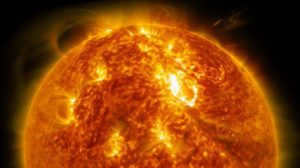
Mercury
Mercury is the tiniest planet in terms of size. Which planet, Venus or Mercury, is closer to our sun? It is Mercury that holds the title of being the closest planet to the Sun. The planet has an incredibly slow rotation speed: it takes one and a half revolutions for Mercury to complete a full orbit around itself. During the night, the temperature drops to minus 180 degrees Celsius, while during the day it rises to a scorching plus 430 degrees Celsius.
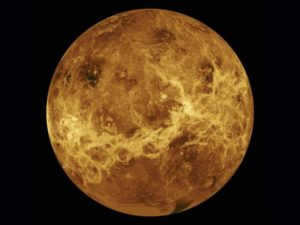
Venus
The planet known as Venus is shrouded in a thick atmosphere of carbon dioxide. It bears resemblance to Earth in terms of mass and size. Between Mars and Venus, which planet is closer to the sun? Venus takes the second position, while Mars takes the fourth. Out of all the planets, Venus is the hottest due to its greenhouse effect.
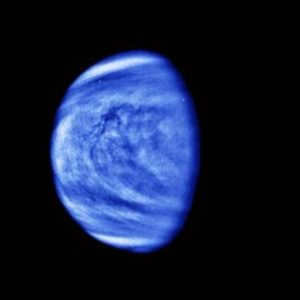
Earth
Life on this planet originated thanks to its unique combination of gases in the atmosphere, including carbon and hydrogen, as well as the presence of oxygen and the optimal temperature. How far is the Earth from the Sun? Earth is the third planet from the Sun, located 149 million kilometers away from this massive star. It is this distance that allows for the perfect conditions for life to exist and thrive.
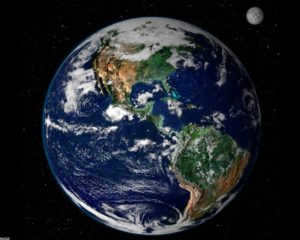
Mars
Mars has a similar structure to Earth, but it is much less massive and has a radius that is only half the size. If Mars had both water and an atmosphere, it could potentially support life. The length of a day on Mars is the same as Earth, but its year is twice as long. Additionally, Mars has two small satellites, Deimos and Phobos, that orbit around it. It is worth noting that Mars is actually closer to Earth than Neptune, contrary to popular belief. And although some people mistakenly think that Mars is closer to the Sun than Earth, this is not the case.
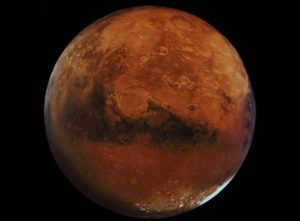
Jupiter
Jupiter is the largest planet in our solar system. If its mass were larger, it could have become a star instead of a planet. The planet’s atmosphere is composed mainly of hydrogen, with smaller amounts of helium, sulfur, phosphorus, and ammonia making up 15% of its composition. Jupiter has a short day length of only 10 hours, and its year is equivalent to 144 Earth months. The planet is also known for its extensive satellite system, with over 60 moons, and it possesses four rings.
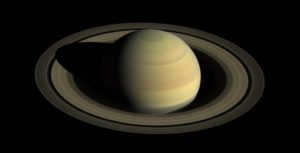
Saturn
Saturn has a density that is less than one, meaning that if there were an ocean several times the size of the planet, Saturn would not sink in it. Additionally, Saturn is known for its numerous rings. The planet’s closest companions are its satellites, some of which are quite large. One of Saturn’s satellites, Titan, is particularly interesting as it has an atmosphere that resembles Earth’s and a pressure that is only 1.5 times greater than ours.
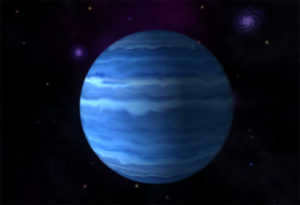
Uranus
Uranus possesses shades of blue and green and is situated in a peculiar orientation where its rotational axis and the ecliptic plane are parallel to one another. It boasts 27 satellites and 13 rings. This celestial body is recognized as the most frigid planet (having recorded a minimum temperature of minus 222 degrees Celsius). The atmosphere on Uranus is extremely turbulent, with continuous winds reaching speeds of up to 580 km/hour. Thanks to the exploration conducted by Voyager 2, scientists have discovered that Uranus possesses two primary magnetic poles and two secondary poles.
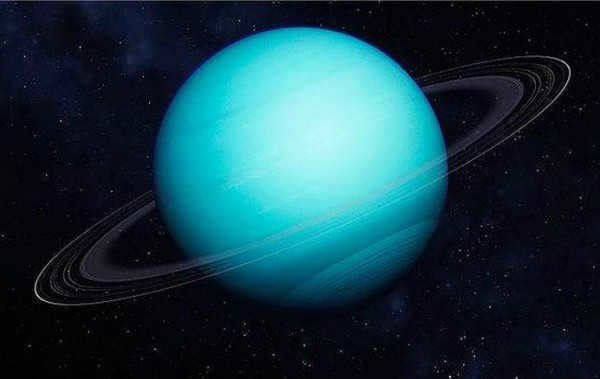
Triton
This celestial body is composed mostly of gas, with a composition that includes methane, ammonia, and water. Its solid core is comprised of rock. The presence of methane gives Triton its distinct blue color. It boasts an impressive collection of 14 satellites and 6 rings. Due to its considerable distance from Earth, there is still much to learn about this mysterious planet.
[warning]Attention! Triton was actually discovered through mathematical calculations. It holds the title for the windiest planet in our solar system, with hurricane winds reaching speeds of 700 kilometers per hour, as reported by the Voyager 2 spacecraft.[/warning].
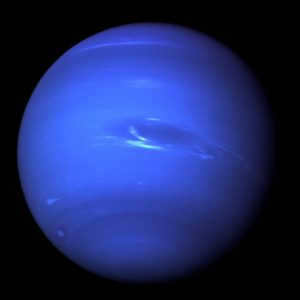
Pluto
Pluto is classified as a dwarf planet. Scientists believe that beneath its icy exterior, there is a rocky core that is about 200 kilometers thick. Limited knowledge is available about Pluto due to its status as the most distant planet from the Sun. Its atmosphere is inhospitable and primarily consists of nitrogen, methane, and carbon monoxide. Pluto has three known satellites – Charon (which was long believed to be its only moon), Hydra, and Nikta. In terms of size, Pluto is only a few times larger than Charon.
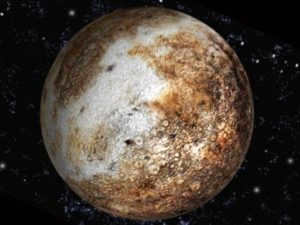
Dwarf planets
Which dwarf planet is nearest to the main star? There have been a total of five planets discovered with this status. These include Pluto, Makemake, Erida, Haumea, and Ceres. Makemake is known for its incredibly flat icy surface, composed of methane ice slabs. Erida is the heaviest dwarf planet, weighing approximately 27% more than Pluto. Haumea stands out due to its oval shape and ice-covered surface. As for Ceres, it is situated in the asteroid belt, possesses a spherical shape, and orbits between Jupiter and Mars.
[stop]Important! Among the other dwarf planets, Ceres is the closest to the sun.[/stop]
The estimated distance from the Sun:
- Ceres is 414 million kilometers;
- Pluto is located at a distance of 5.9 billion kilometers from Earth;
- Haumea can be found at a distance of 7.7 billion kilometers from Earth;
- Makemake’s distance from Earth is 7.9 billion kilometers;
- Erida is located at a distance of 10 billion kilometers from Earth.
It is possible that more dwarf planets will be discovered in the future.
Watch this informative video to learn how many planets are in the solar system.
Check out this informative video on the solar system!
Due to its composition mainly consisting of iron, nickel, and silicates, as well as its minimal atmosphere, Mercury appears as a dark gray color with a stony appearance.
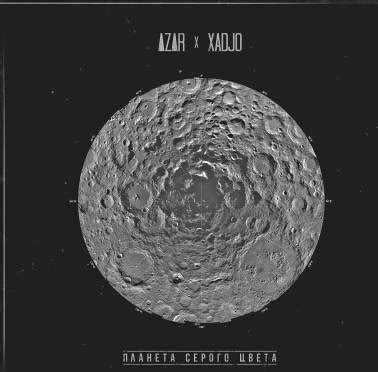
Table of Contents
- Which planet appears gray in color?
- What type of planet is characterized by a blue hue?
- Which planet is green in color?
- What planet can be seen in the evening sky?
- Which planet is considered the most dangerous in the world?
- What planet is pink in color?
- Where does it rain glass in the universe?
- What is the reason behind our earth being referred to as the Blue Planet?
- Mercury is grayish-brown in color.
- Venus appears yellow-white.
- Earth has a light blue color.
- Mars is red-orange in color.
- Jupiter has an orange color with white elements.
- Saturn is light yellow in color.
- Uranus has a pale blue color.
- Neptune also has a pale blue color.
What is the color of the planet Mercury?
The planet Mercury has a high iron content and almost no atmosphere, which gives it a gray appearance when observed through a telescope.
When viewed from a distance, the surface of Mars appears reddish due to the presence of red dust in its atmosphere. However, up close, the color is a combination of yellowish brown with hints of golden, brown, reddish brown, and even green, depending on the minerals present on the planet.
So, the color of the planet Mercury is gray.
If we consider the question of the color of Mercury (planet), we can say that its actual hue is gray. In general, Mercury bears many similarities to the Moon, which is Earth’s satellite. They share similar landscapes, such as craters, faults, and traces of meteorite impacts, as well as similar coloring. It is believed that Mercury was once a satellite of Venus but eventually managed to separate from it.
What is the color of the planet Eridus?
Eridus sets itself apart from Pluto and Triton in terms of color. While Pluto and Triton exhibit a reddish tint, Eridus appears more grayish in hue.
Why is the planet Earth sometimes referred to as a blue planet?
The planet Earth is often called a blue planet because of its vast amount of water and the blue hue of its atmosphere. This unique combination of water and atmosphere gives Earth its distinct blue appearance.
Another celestial body that is known for its blue appearance is Planet Neptune, often referred to as the big blue giant. The atmosphere of Neptune has a blue hue, which gives the planet its striking blue color.
Additionally, the term “Blue Planet” can also refer to the Japanese award given for significant contributions to global environmental issues. This award recognizes individuals or organizations that have made a significant impact in addressing and solving environmental problems on a global scale.
When it comes to Jupiter, the largest planet in our solar system, its color is primarily a reddish hue. This reddish color is believed to be caused by the presence of phosphorus compounds, sulfur, carbon, and possibly organics from electrical discharges in the planet’s atmosphere.
Jupiter has been observed and studied by humans for centuries. In ancient Mesopotamian culture, it was referred to as the “White Star.” Chinese astronomers provided a detailed description of Jupiter’s 12-year cycle of motion and called it the “Star of the Year.” The Greeks associated Jupiter with Zeus and called it the “Star of Zeus.”
So, while Jupiter may not be blue like Earth or Neptune, it still holds a significant place in our understanding and exploration of the universe.
What color is Jupiter?
What is the color of Jupiter? Jupiter, the gas giant and largest planet in our solar system, displays a range of colors including brown, yellow, red, and white. These vibrant bands are created by ice crystals and other elements surrounding the planet.
Which planet is green in color?
This particular planet is mainly composed of molecular hydrogen and helium. However, it also contains small amounts of methane, a gas that absorbs red light. It is this methane that gives the planet its distinct greenish-blue hue. As for Uranus, its color can be observed in photos shared online.
Uranus stands out with its consistent white color. In contrast, Venus and Mercury remain relatively close to the Sun in the sky.
What is the color of Neptune?
Similar to Uranus, Neptune’s atmosphere appears blue due to the absorption of red light by methane. However, Neptune’s vibrant azure shade sets it apart from Uranus, which has a more moderate aquamarine color.
What is the color of the planet Pluto?
Even when observed through powerful telescopes, Pluto appears as a tiny dot that cannot be distinguished from a regular star. This is because its angular diameter is smaller than 0.11″. The color of Pluto is a light brown.
Out of all the inhabited islands, Greenland is the most desolate.
Due to its proximity to the Sun, Venus is always within a distance of 47.8″ from the Sun. As a result, the planet can only be seen shortly before sunrise or after sunset. Because of these specific viewing conditions, Venus has earned the nicknames “Evening Star” and “Morning Star”.
What is the color of Jupiter?
The variations in Jupiter’s color, which can range from reddish tones, may be caused by the presence of phosphorus compounds (specifically red phosphorus), sulfur, carbon, and potentially organic materials resulting from electrical discharges in the planet’s atmosphere.
Which planet is the most hazardous in the whole universe?
| Closest distance to the Sun (Perihelion) | 1,353,572,956 km (9.048 astronomical units) |
| Farthest distance from the Sun (Aphelion) | 1,513,325,783 km (10.116 astronomical units) |
| Main semi-axis (a) | 1,429,394,069 ± 0 km and 1,426,666,414 179.9 m |
| Eccentricity of orbit (e) | 0.055723219 |
Which planet has a pink color?
The planet called GJ 504b is four times the size of Jupiter. Its striking pink hue is a result of the heat it emits. The planet is still relatively young, and the gas has not had enough time to cool down, resulting in a temperature of approximately +237 °C. According to NASA, the star system GJ 504, where the planet is located, is 160 million years old.
What is the name of the orange planet?
Mars is a terrestrial planet with a thin atmosphere, with a surface pressure 160 times lower than that of Earth.
Which planet is the brightest?
The brightest planet is Venus, with a magnitude of -4.4. Venus appears the brightest when observed from Earth. It is the closest planet to Earth and also reflects sunlight most effectively due to its cloud-covered surface.
Where does it rain glass?
What is the location of glass precipitation?
The climatic conditions on HD 189733 A b are extremely hazardous. Gales consisting of silicate particles move at a velocity of 8700 km/h. While studying this celestial body, it has also been discovered that it experiences precipitation in the form of molten glass.
The main takeaway is that in actuality, HD 189733b serves as a cruel ordeal for interstellar travelers. It is entirely unsuitable for habitation. This planet is characterized by a phenomenon where shards of glass literally fall from the sky. The atmosphere is rich in silicon particles, which cause blue light to scatter.
What is the reason behind the name “Blue Planet” for our Earth?
The majority of Earth’s surface (approximately 75%) is covered by seas and oceans, while only a quarter of it is land. Water, in the form of rivers, lakes, seas, and oceans, dominates our planet. This abundance of water gives our planet its blue hue and thus the name “Blue Planet.”

